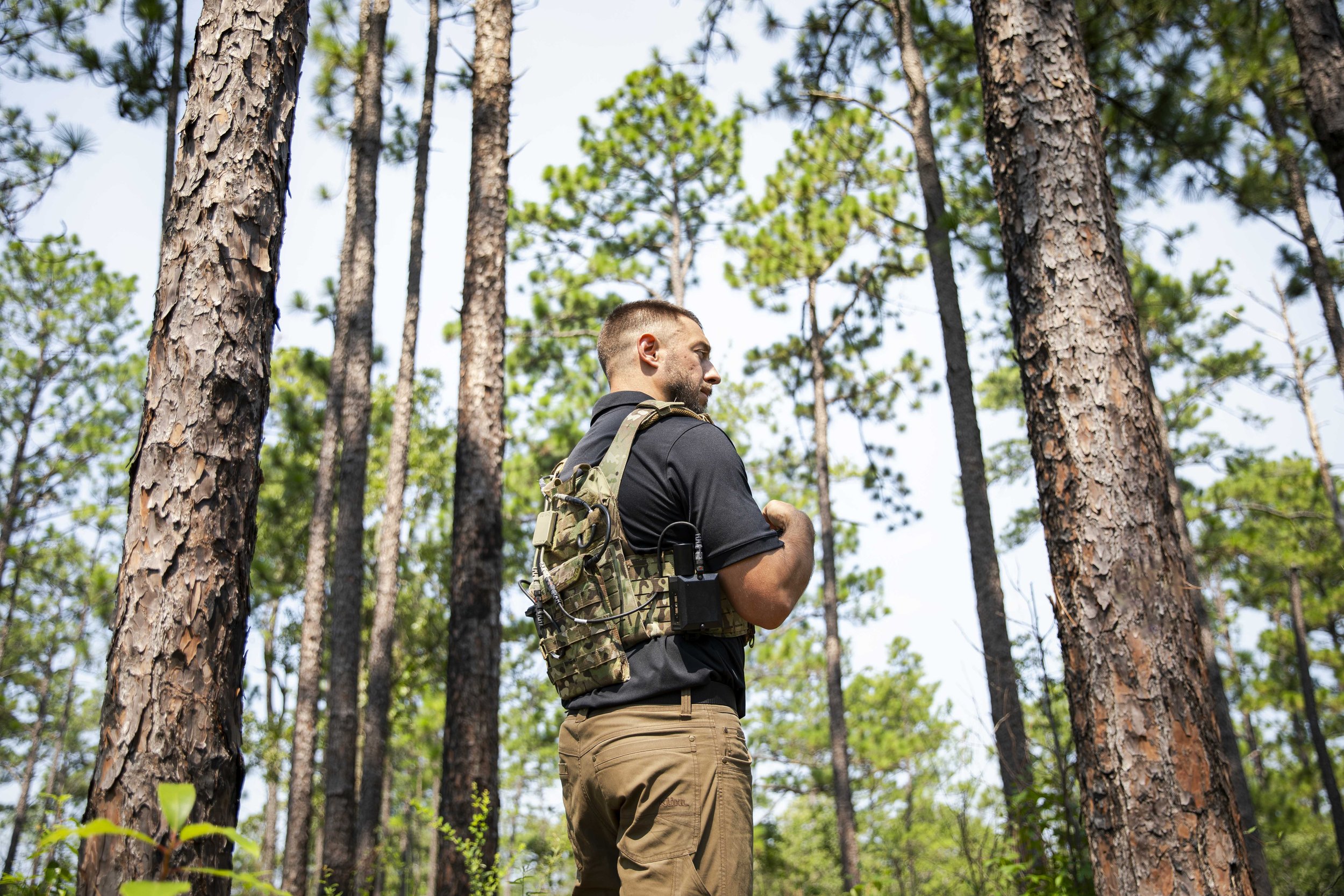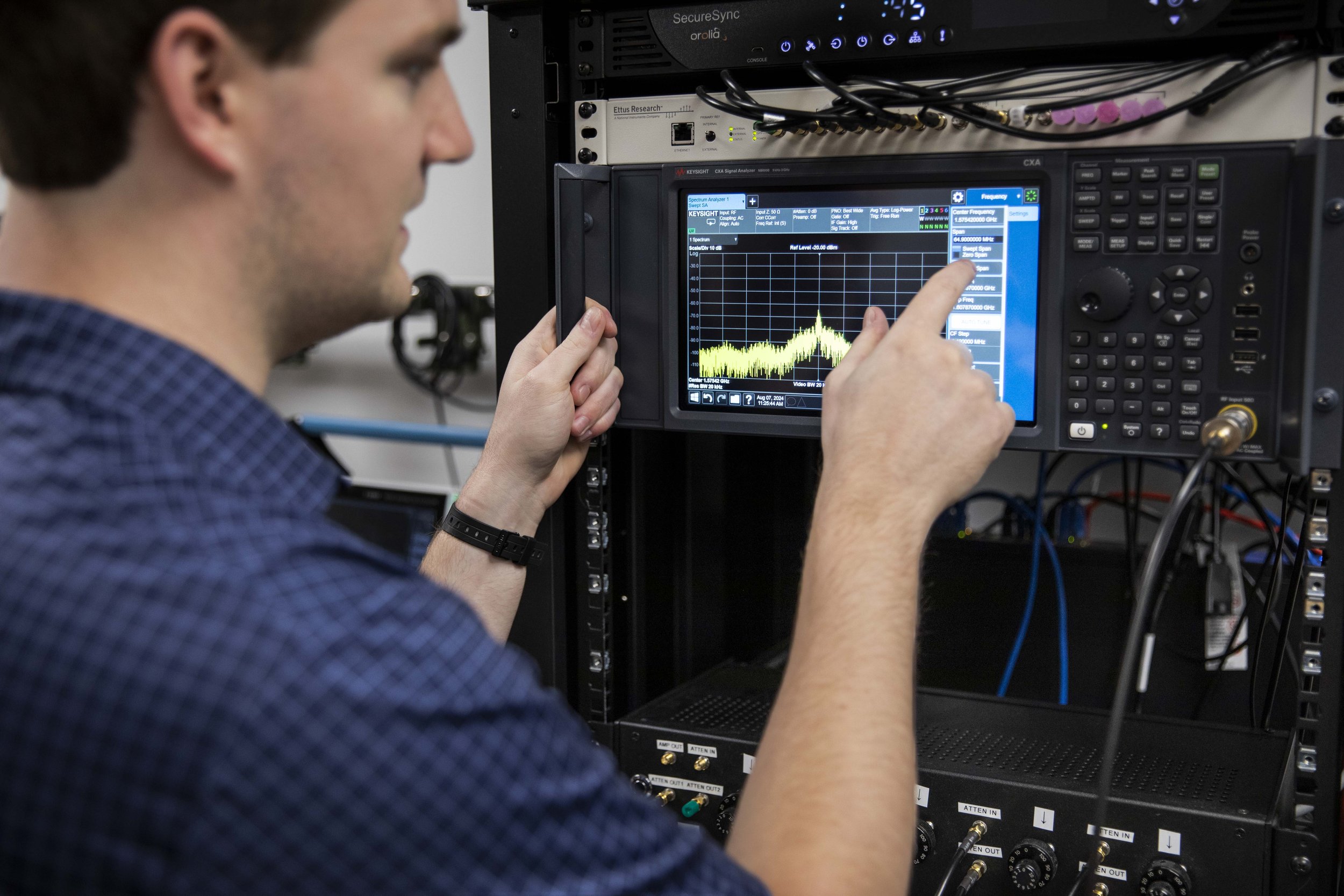
Beyond the Classroom
Our office in Auburn, Alabama is located just a few miles down the street from Auburn University, and our site co-leads haven’t strayed far from their college roots.
They met at the school’s GPS & Vehicle Dynamics Lab and shared a desire to see their PNT and robotics work transition from the academic arena into the field. This alignment of purpose led to the establishment of IS4S’s first office outside of Huntsville.
Here you’ll find a team willing to roll up our sleeves, take ownership, and get things done both for our customers and ultimately for the warfighters we know are relying on us to provide life-saving solutions to real-world problems.
Integrated Solutions
-
Assured PNT
Multi-Sensor, Integrated PNT
PNT Waveform Design
PNT System Testing & Analysis
Anti-Jam Electronics
Software-Defined Global Navigation Satellite System (GNSS) Receivers
Software-Defined Digital Antenna Electronics
Precise Timing
Time Distribution
-
Architecture Design
Requirements Development
Test Planning
System Modeling
Gap Analyses
Complex Systems of Systems Integration
Risk Management Framework (RMF)
-
Open Frameworks
Embedded Systems
Enterprise Applications
Tactical Assault Kit (TAK)
Algorithm Development & Implementation
Modeling
Digital Twins
-
Sensor Open Systems Architecture (SOSA)
VITA
pntOS-Compliant Navigation System Design
Modular Software Design
Contributors to Multiple DoD Standards with Integration Experience
-
Cloud Hosted Solutions (Azure, AWS, & Others)
On-Premises Hosted Solutions (Ad Hoc Solutions)
NIST 800-171 Compliant Environments
-
Software-Defined Receivers
Software-Defined Transmitters
Software-Defined Digital Antenna Electronics
Embedded Development & Deployment
Real-Time Operating Systems
-
Configuration & Deployment of Tactical Networks
Precise Time Distribution Over Tactical Networks
Data Protocol Development
Integration Experience with Multiple DoD Protocols
-
Electromagnetic Support
Electromagnetic Protection
Electromagnetic Attack
Navigation Warfare
Command & Control (C2)
Radio Frequency (RF) Design
Signal Processing
-
Guidance, Navigation, & Control
Collaborative Strategies
Collaborative Navigation
Fire Control System Modeling
Missile Defense
-
Guidance, Navigation, & Control
Collaborative Strategies
Collaborative Navigation
Fire Control System Modeling
-
Unmanned Ground Vehicles
Path Planning
Autonomous Convoys
Autonomous Safety Systems
Guidance, Navigation, and Control (GNC)
-
Satellite Constellation Modeling & Analyses
Waveform Development
RF & Path Analyses
-
Controller Area Network (CAN)
State Estimation
Sensor Development & Installation
Autonomy
Autonomy Safety Systems
-
Systems Integration
Application & Capability Development
Common Operating Picture
Tasking & Coordination
Advanced Prototyping for Fielded Systems
Requirements Development
-
Hardware-In-The-Loop (HWIL) Simulation
Software-In-The-Loop (SWIL) Simulation
GPS/GNSS Simulation
Electromagnetic Warfare (EW) Environment Simulation
Our Work
Our Products
NavEagle
NavEagle is a multi-mission, multi-domain electronic support (ES) sensor and anti-jam system focused on detecting and finding sources of PNT interference. NavEagle continuously monitors the electromagnetic spectrum (EMS) and provides both measurements and reports to inform and alert users of interference impacting operations. It supports building a PNT situational awareness (SA) picture through spectrum measurements, direction finding, and waveform analysis.
EGADS
The Electronic GPS Anomaly Detection System (EGADS) is a GPS monitor that provides GPS situational awareness (SA). It provides a roll on, roll off capability to passively monitor GPS L1/L2 bands by running a suite of complementary GPS spoofing and jamming detection algorithms. EGADS captures in-phase and quadrature (IQ) data and provides indications to notify users and downstream systems of interference that may impact GPS-based systems on air, ground, or naval platforms.
Auburn Leadership
David Hodo
Vice President
-
David Hodo joined IS4S in 2011 and currently serves as vice president and co-site lead for the Auburn, Alabama site. In this role, he is responsible for the capture, program management, and technical execution of efforts in the areas of assured PNT, GPS/GNSS integrity, network-assisted navigation and integrity, software-defined receivers (SDRs), and autonomous ground vehicles.
David is an electrical engineer with over 20 years of experience in control system design, estimation, signal processing, and embedded system and software development. During his tenure at IS4S, he has led multiple efforts to develop assured PNT systems for the Department of Defense (DoD) for both mounted and dismounted platforms, including serving as the program manager and technical lead for the IS4S Dismounted Assured PNT System (DAPS) 1.0 effort. He has led the development of algorithms and testing methodologies for ensuring the integrity of GPS receivers for the DoD, Department of Homeland Security (DHS), and Department of Transportation (DOT). David has also contributed to and led the development of SDRs for navigation using both satellite and terrestrial signals.
David studied under Dr. David Bevly in the GPS and Vehicle Dynamics Laboratory (GAVLAB) at Auburn University prior to starting the Auburn PNT and autonomy group for IS4S in 2011. His research there focused on ground vehicle navigation and autonomy. While a graduate student in the GAVLAB, David led efforts to develop a family of autonomous ground systems for mapping unexploded ordnance (UXO) and developed novel GPS-denied navigation algorithms using simultaneous localization and mapping (SLAM).
William Travis, Ph.D.
Vice President
-
Dr. William Travis leads multiple electromagnetic and navigation warfare efforts covering sensing, protection, and attack; development of assured PNT technologies; command and control; and multi-domain systems of systems design and integration. He has over 20 years of experience in estimation, signal processing, platform dynamics, and implementation.
William joined IS4S in 2009 while in graduate school where he began work in network-assisted navigation. He spent three years at Parsons where he investigated advanced weapon navigation systems, contributed to an M-on-N modeling and simulation environment, and provided studies and assessments to intelligence community partners. He rejoined IS4S in 2013 to co-lead the Auburn, Alabama office. He now leads teams of engineers executing complex, inter-related efforts and provides technical contributions to those efforts.
William studied under Dr. David Bevly at Auburn University. He focused on ground vehicle dynamics and rollover stability before transitioning to unmanned systems and ground vehicle navigation. He demonstrated real-time relative navigation and path duplication for autonomous convoys prior to graduating.
David C. Roberts
Executive Vice President
-
David Roberts has over 40 years of engineering and operations experience. He started his engineering career at Motorola in 1984. In 1993, he was a founding member of a start-up wireless company where he helped lead the company to become a $300M+ publicly traded entity managing engineering, IT, HR, marketing, and sales organizations. After a brief retirement in 2004, he was the business manager for Landmark Christian School and then moved on to another start-up venture providing rural wireless internet service.
He joined IS4S in 2017 as deputy project manager for the Next Generation Area Attack Weapon (NGAAW) effort and later moved to a corporate role in 2019. He currently serves as our executive vice president of finance and operations based out of Auburn, Alabama.
David also serves on an employee stock ownership plan (ESOP) board for a large southeastern-based site development company.
Rob Daily, Ph.D.
Senior Technical Fellow
-
Dr. Rob Daily is a member of the IS4S Auburn office with over 16 years of experience in defense contracting. Rob specializes in navigation and 6-DoF physics modeling.
Rob was the first Ph.D. student at Auburn University’s GPS and Vehicle Dynamics Lab (GAVLAB), which continues to be a key partner in several IS4S efforts. While there, Rob formed relationships with several current IS4S employees and partners.
At IS4S, Rob developed a modular estimation architecture which forms the core of multiple PNT programs. His recent navigation efforts have focused on GPS-denied and degraded environments on a variety of dismounted, ground, and aerial platforms. These efforts incorporate multiple aiding sensors such as LEO satellites, barometers, magnetometers, and EO/IR cameras. He also oversees development of a tool to determine the effects of electronic attacks on precision guided munitions. He has led several additional efforts including automated ground vehicle convoying, re-entry vehicle modeling, and collaborative interceptor guidance improvements.
At a previous company, Rob was a key developer of high-fidelity ballistic missile simulation software. Using this tool, he directed and supported several integrated navigation hardware-in-the loop (HWIL) tests. He was also the principal investigator for utilizing the Hypervelocity Projectile (HVP) in an air-defense role.
Jeff Reese
Senior Technical Fellow
-
Jeff Reese is a distinguished radio frequency (RF) hardware expert with three decades of experience and innovation in both commercial and government sectors. Upon graduating from Virginia Tech, his career began at Ericsson and Motorola where he played a pivotal role in designing the first flip phone, the Motorola Startac. He gained RF packaging expertise working at Texas Instruments and Marvell Semiconductors developing wi-fi and Bluetooth System-in-Packages (SiPs). At NextNav, he designed terrestrial geolocation products and deployed over 250 base stations nationwide for FirstNet responders.
Currently, Jeff leads RF and high-speed electronic hardware design at IS4S. His work includes pioneering next-generation PNT solutions and software-defined radios (SDR) for open architecture designs. He is at the forefront of designing the common Modular SDRs (cMSDR) weapon data link for the Air Force’s small form factor SOSA VNX+ platform.
Jeff’s expertise includes designing communication systems, transceivers, integrating CRPA and multi-band antennas, precision clocks, FPGAs, sensors, and IMUs to enhance navigation in GPS-denied environments. Beyond his technical prowess, Jeff is known for his leadership in defining engineering processes and his commitment to advancing open architecture standards. His work continues to shape the future of wireless systems, making him a key figure in the industry.

Auburn Careers
Join us in our mission to solve complex problems of national importance in an environment where doing the right thing is more important than profit, and in a company fully owned and operated by ethical, motivated employees.
Check out our active job openings to apply!
Contact Us
Please do not submit any Personally Identifiable Information (PII), sensitive personal data, or confidential government information through this message box. This communication channel is not authorized for the transmission of personal, classified, proprietary, or controlled unclassified information (CUI). For your privacy and security, keep all communications general.
Auburn Site Address
OFFICE SITE
4276 US Hwy 29 S
Auburn, AL 36830
CAGE: 72W28
TEST FACILITY
1737 Lee Rd 10
Auburn, AL 36832

















